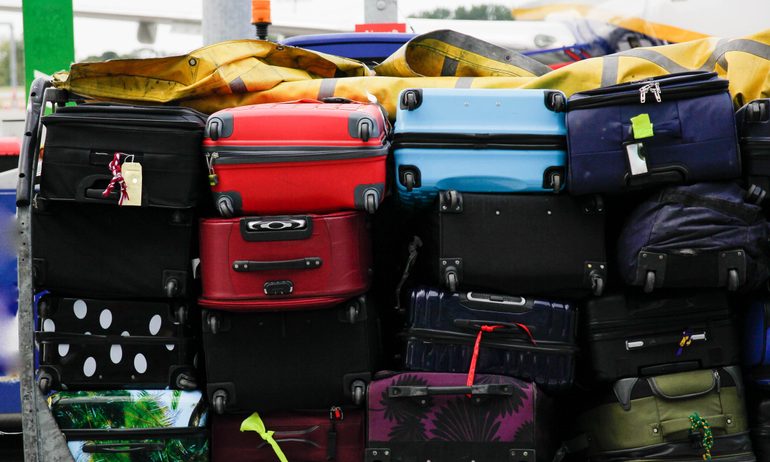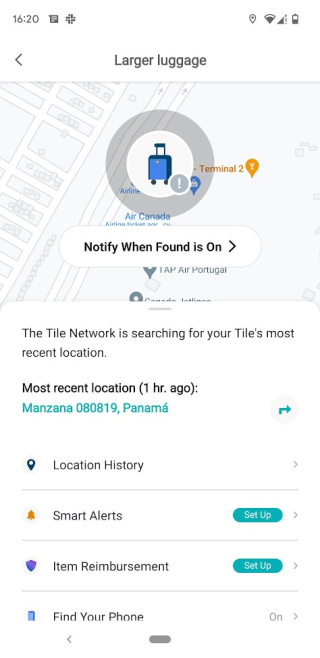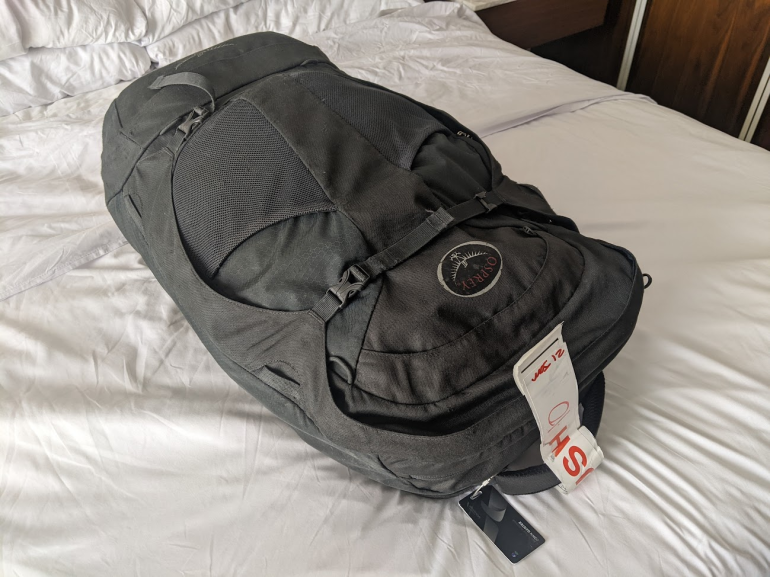Why AirTags Alone Might Not Be Enough to Get Your Lost Bags Back
Knowing where your luggage is only half the battle. The other half is getting it back.

Many or all of the products on this page are from partners who compensate us when you click to or take an action on their website, but this does not influence our evaluations or ratings. Our opinions are our own.
Apple AirTags and similar bag-tracking products have recently become a must-have travel accessory. Between airline operational collapses and ground staff strikes and shortages, airlines seem to be mishandling checked bags at alarming rates.
Viral stories have demonstrated the power of placing a bag tracker in your checked luggage. In April 2022, a British traveler used an AirTag to track down the location of his missing checked bag, uncovering a storage locker full of stolen bags.
Then in November 2022, another traveler went viral after using an AirTag to publicly call out the address where a thief had taken his stolen camera equipment.
The trouble with both of these cases: Neither traveler got all of their belongings back. And that's the major limitation of bag-tracking devices. Although you might be able to track your bag's location, that alone might not be enough to be reunited with your bag or its contents.
But travelers have another powerful resource for getting reunited with their bags. Here's why I argue that travelers should use a mishandled baggage concierge service in addition to an AirTag or Tile to get lost luggage back.
Why you should use an AirTag or Tile to track your checked bag
If you aren't convinced of the usefulness of a baggage-tracking device, let's start there. AirTags and Tiles have become extremely popular with travelers for a good reason. By slipping a small, relatively cheap device in your checked bag, you can use the vast network of iPhones and Tile app users to virtually track the location of your checked bags.
I asked travelers on Twitter about their experiences with bag trackers and here’s what they said.
Traveler Frankie Misra shared a simple — but powerful — way using AirTags helped him. Upon arrival at New York-John F. Kennedy airport, the Delta app directed him to head to the Terminal 4 baggage claim. However, his AirTag indicated that his bag went to the Terminal 2 baggage claim instead.
Another traveler, Kyle Brewington, was informed upon landing in St. Louis that his gate-checked bag was mistakenly left in Houston. He checked his AirTag's location and found it was in the St. Louis airport. The airline double-checked the plane and found his bag. Turns out it wasn't left behind after all!
Yet another traveler shared how she may have avoided having a checked bag left behind. Upon boarding her flight at a remote stand, she noticed her checked bag was still located back at the terminal. She alerted a flight attendant, who took action. Her bag was finally loaded onto the flight 40 minutes later as the doors closed.
» Learn more: How lost luggage insurance works
Shortcomings of using only baggage trackers
However, not every mishandled bag situation is as easily solved by using just luggage trackers.
One traveler shared his mixed experience using an AirTag. He flew from London to Seattle in January 2023. By tracking his AirTag, he discovered that his bags missed his flight.
Although his bags arrived just a day later, the airline's baggage system lost track of the bags upon arrival. Even though he knew exactly where his bags were, he could not collect them from the airline for another 11 days.
On a recent Copa Airlines flight, my checked bag seemed to be destined for a similar fate. Upon landing in Cartagena, my wife opened her Tile app to find that one of our checked bags was left behind in Panama City. We showed the bag location data to the Copa baggage agent in Cartagena and filed a report.

The baggage agent told us the bag would likely be found and sent to Cartagena on that evening's Copa flight. However, that didn't end up happening. One location ping after another showed that our bag remained in the Panama City Terminal 2 baggage area the rest of the night and into the next morning.
That's when I filed a missing bag report with Blue Ribbon Bags, my lost luggage concierge service. Within an hour of sending a report to Blue Ribbon Bags, the company sent an urgent request to Copa. Soon after, the airline confirmed our bag had been found and booked on the next flight to Catagena.

(Photo courtesy of JT Genter)
Within five hours of opening a report, our bag was back in our possession, having been delivered with a "rush" tag.
» Learn more: Credit cards that provide travel insurance
Other ways to track down your luggage, in addition to an AirTag or Tile
My delayed baggage experience hammered home the fact that knowing the location of your bag is only half of the battle. Sometimes it takes an advocate that knows how airline baggage systems work to trigger an airline to act.
In my case, Blue Ribbon Bags was able to look at the internal baggage systems that the airline uses and see that Copa hadn’t logged any activity on my case since shortly after we filed our missing luggage report.
If you don't use Blue Ribbon Bags, getting another human — not a chat bot in the airline's app — to help you find your luggage is usually the best way to find out what happened. Go to the airline's baggage office and alert them to your missing bag. If you purchased travel insurance, call the assistance hotline and have them do some of the legwork for you.
If you're considering using a baggage tracker…
So is an AirTag good for lost luggage? Baggage trackers have proven their worth — from mundane situations like which terminal your checked bag is at to helping travelers track down expensive stolen camera equipment.
However, knowing where your checked bag is can only get you so far. A baggage concierge service, airline employees, and travel insurance hotlines can help you cut through airline red tape and help you get your bags not just located, but back in your possession.
How to maximize your rewards
You want a travel credit card that prioritizes what’s important to you. Here are some of the best travel credit cards of 2025:
Flexibility, point transfers and a large bonus: Chase Sapphire Preferred® Card
No annual fee: Wells Fargo Autograph® Card
Flat-rate travel rewards: Capital One Venture Rewards Credit Card
Bonus travel rewards and high-end perks: Chase Sapphire Reserve®
Luxury perks: The Platinum Card® from American Express
Business travelers: Ink Business Preferred® Credit Card
Chase Sapphire Preferred® Card
Travel
Dining
🔥 Huge highest-ever bonus on NerdWallet's 2025 Best All-Purpose Travel Rewards Card is back. Don't miss your rare chance to: Earn 100,000 points when you spend $5,000 on purchases in the first three months. That's worth at least $1,250 toward travel booked through Chase.


